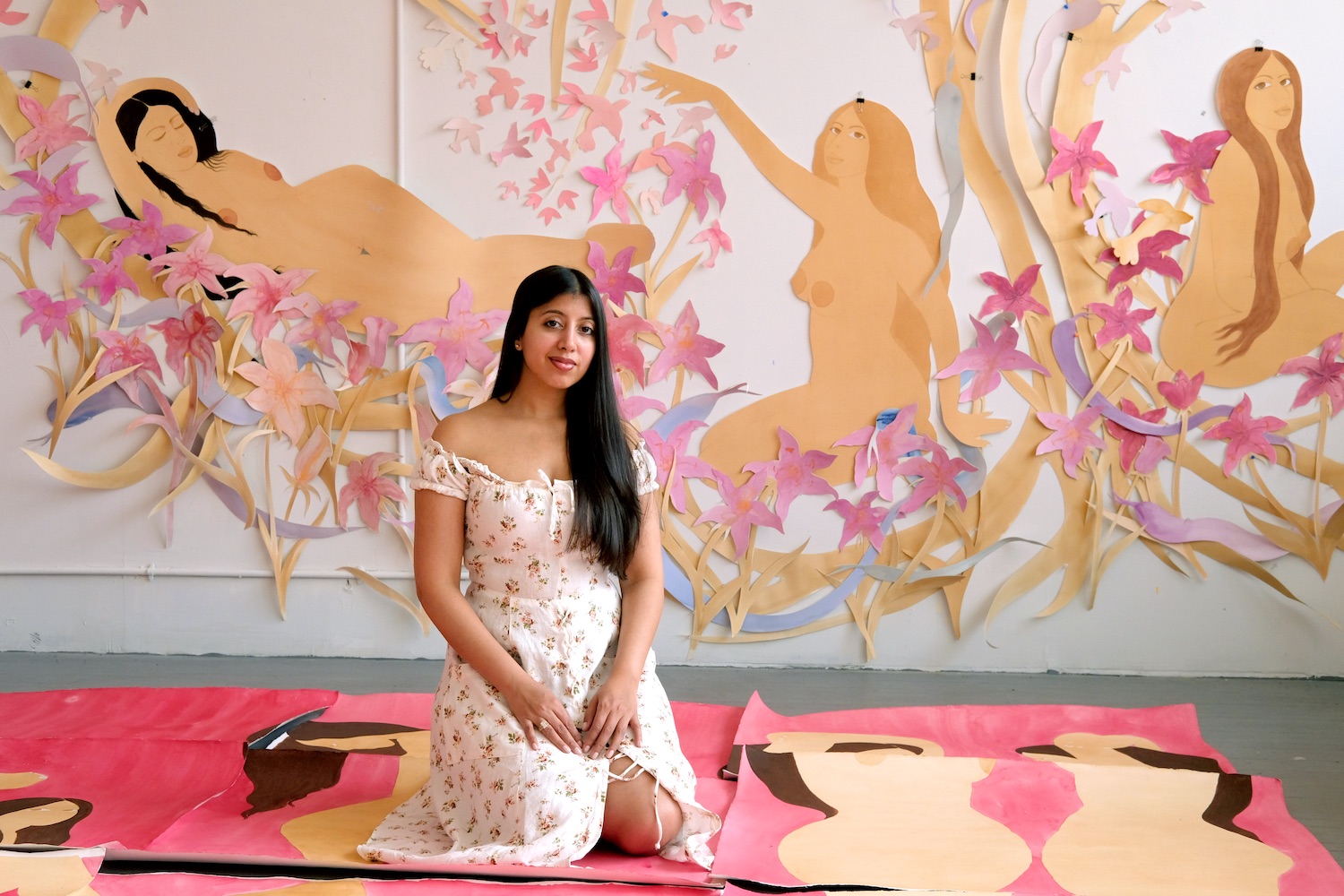Olivier Fournier has worked with Hermès for over 30 years in various roles. Today, he is the executive vice president of compliance and organizational development at Hermès International, the president of the Fondation d’entreprise Hermès, and a member of the Executive Committee. While overseeing sustainable development and supervising the brand’s preservation of craft, Fournier is dedicated to ensuring change is tracked and education is transferred to younger generations for long term success.
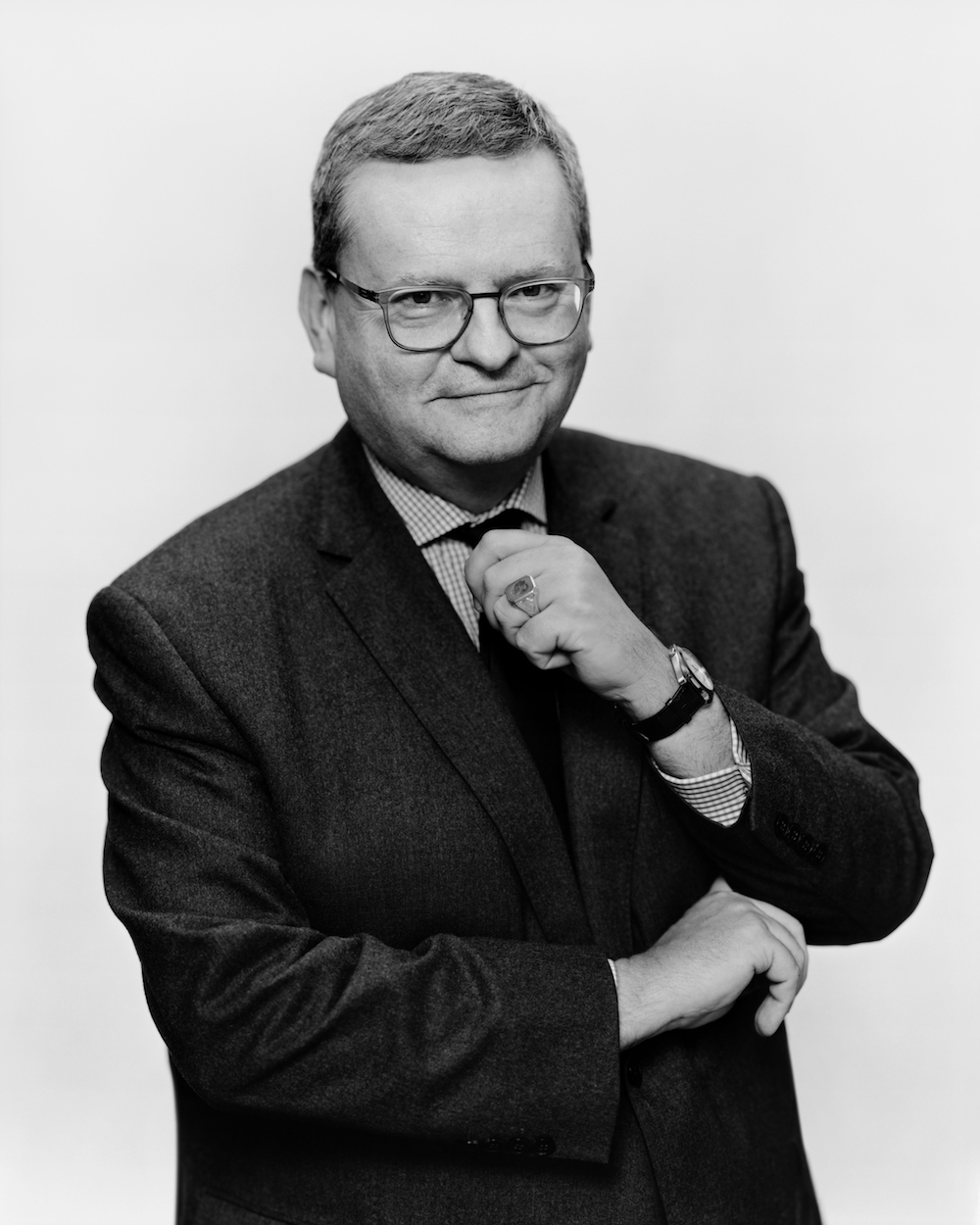
Portrait of Olivier Fournier courtesy of Hermès.
With Fournier’s leadership in corporate social responsibilities, Hermès is elaborating on its deep respect for nature by engaging in change- making alliances—like the UN Global Compact initiative and the Responsible Jewellery Council (RJC) coalition. And by investing in its craftsmen and ensuring the education of younger generations, Hermès is preserving the know-how of its workshops around the world.
Each year, more than 120,000 objects are repaired, unsold scarves are reused for the creation of new shirts, leather is carefully cut to create more shapes, and new materials are explored—such as Sylvania, a fine-tuned mycelium material created in collaboration with MycoWorks.
Whitewall spoke with Fournier to learn how respect for natural materials and the transmission of training will preserve craftsmanship in a more conscious future.
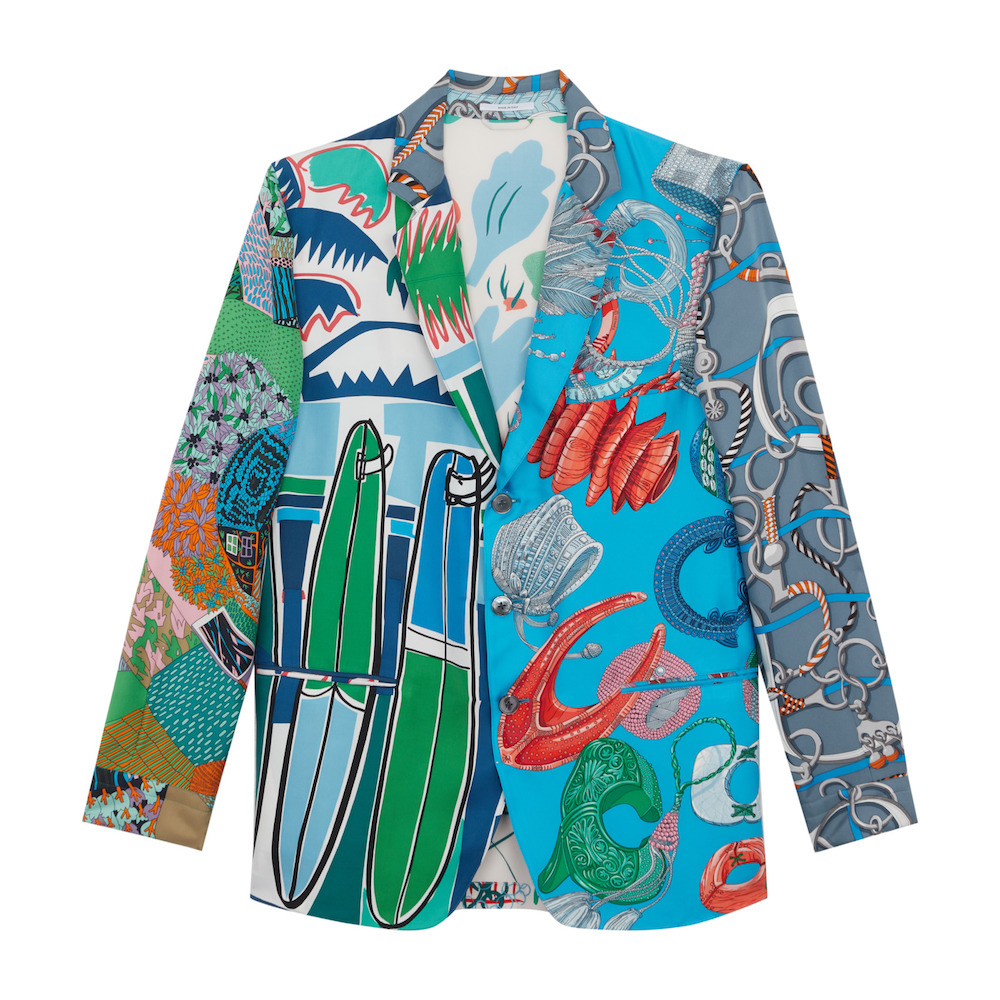
Men’s Spring/Summer 2020 jacket made with upcycled scarves, photo by GrandShooting, courtesy of Hermès.
WHITEWALL: What measures is Hermès taking to ensure a more protected biodiversity?
OLIVIER FOURNIER: Hermès has such a long history and has always strongly been involved in craftsmanship. Respect for nature is in our DNA. We use natural materials, and there’s a strong sense of responsibility—not only from the management side, but from our craftsmen. When you visit the workshops, you can see how intense the attention of the craftsmen is, regarding the material they use.
Because it is the result of their own work, so they have to be very cautious. Doing something by hand, it’s not like doing something with a machine. By producing a piece from A to Z and signing it, artisans take responsibility for their object. This responsibility inspires confidence, and vice versa. The commitment is so important that it is directly related to the respect we hold to the nature, which gives us the materials we use.
WW: Many would argue that buying one Hermès bag, and using it your entire life, is an act of sustainability. Would you agree?
OF: Absolutely. We think that our objects are long-lasting objects, so you can pass them from generation to generation.
We repair more than 120,000 objects per year. It’s what we believe in. By creating objects by hand, it gives a long life to the objects, and that’s why it’s important to have natural materials. It’s not a question of quantity; it’s a question of quality. We are always looking for the best quality possible. And if you want to have good quality, you have to respect the origin of the materials.
If you respect the animals and nature well, you will have good quality material. It doesn’t just have a positive impact on our activities; it has a positive impact on the activities within nature, like farming.
When we are talking about sustainability developments, or corporate social responsibility, we should never forget that it’s also about people. Of course, it’s about nature—the environment, carbon footprint—but at its origin we have people. The human encounter is very important to us.
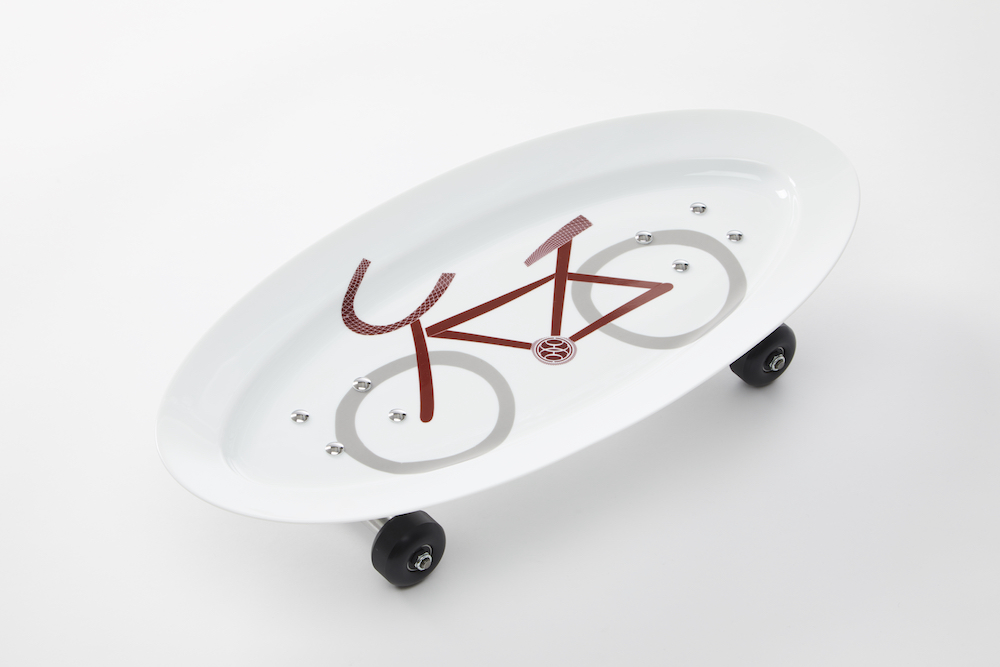
Hermès petit h skateboard, photo by Matthieu Raffard, courtesy of Hermès.
WW: How are the house’s values adopted from generations of artisans who have shaped the house and its objects since the 1800s? What has been adopted and carried on?
OF: It’s about our DNA and transmission. It’s about passing the fundamental values from one generation to another. It’s also about authenticity. We have kept our approach to craftsmanship the same for centuries. As long as you are committed, authentically, and transmitting the know-how, you communicated all of the important things that belongs to these values. Our sustainable approach is a part of that. Quality first, always, which implied sustainability for long-lasting objects.
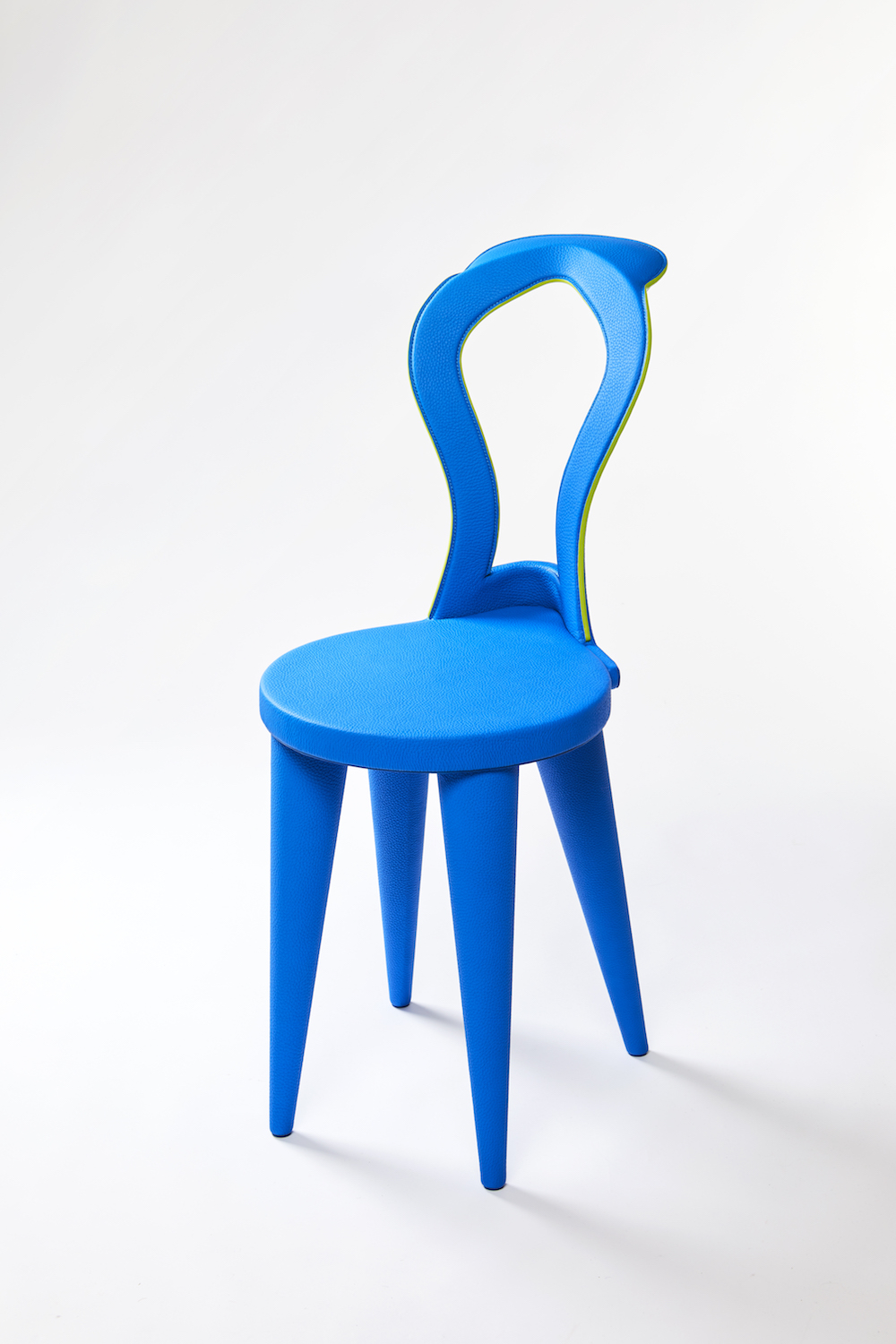
Hermès petit h chair, photo by Matthieu Raffard, courtesy of Hermès.
WW: In the early 20th century, the desire to train and work as an artisan was declining. Are you seeing more of an interest from younger people today?
OF: Yes. The fact that we stick to this craftsmanship model is consistent with the expectation of the younger generations. We have more than 5,600 craftsmen in France—for items like silk, leather goods, porcelain, and crystal. We internally produce more than 60 percent of our objects, and more than 80 percent of our total production is made in France. We recruit more than 200 craftsmen per year in France. Since 2010, we have recruited more than 2,500 artisans in France.
We can see through the recruitments that there are new generations coming to us, even people with high degrees, because they want to do, and believe they can, do something with their hands. They are also willing to learn a metier deeply because we always train our craftsmen ourselves, for a very long period. We implement our workshops into the countryside where there is a lack of employment to participate in the territorial anchoring and revitalization of territories.
It’s sustainability of job and sustainability of object. We are consistent with what the young generation expects today—to be authentic and do something real. It’s not digital; it’s not a hologram. We’re working on real objects with real materials with real people.
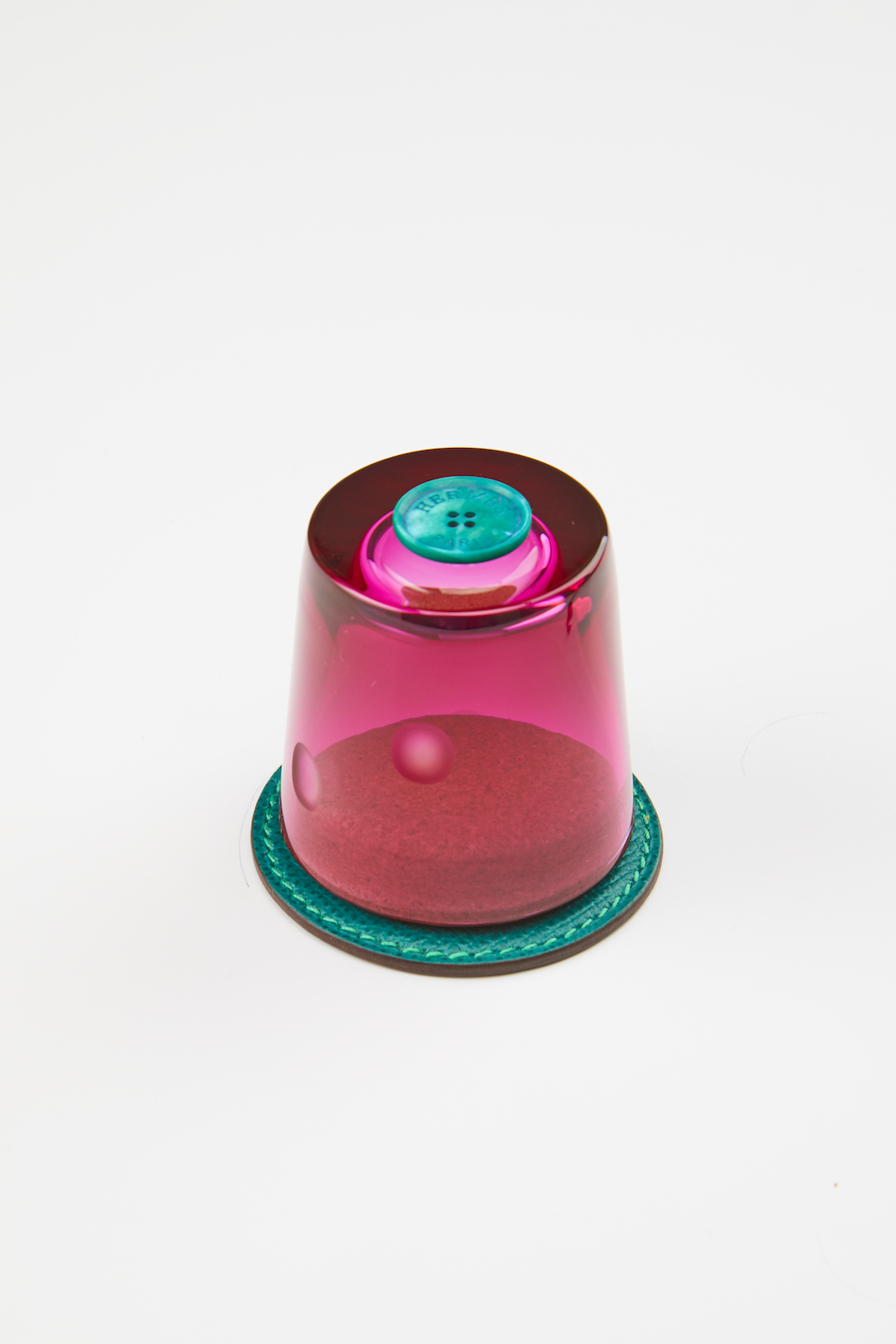
Hermès petit h salt shaker, crystal leather and button. Photo by Matthieu Raffard, courtesy of Hermès.
WW: How do you decide which materials are upcycled or not?
OF: It is guided by the freedom of creation. All the creators—designers, artistic directors—know they have all these materials at their disposal and like playing with them. We recently had a presentation from Véronique Nichanian, artistic director for the Men’s universe. She said she has been upcycling for many years with the printed silks. She used some scarves from previous collections to make shirts and jackets. The freedom of creation, for them, is a good opportunity to play with the material.
Petit h is a great example of what we can do, but we also do this within all of our metiers. Silk, ready-to-wear, leather goods—we have ways to use those materials. For leather goods, artisans only retain the most robust parts in order to ensure the best possible quality. The placement of the pieces of the puzzle is always optimized and the secondary pieces of hide can be used, for example, as reinforcement interlinings. Even the smallest pieces of leather are used, ensuring that offcuts are not wasted. It’s all of these tools, but it’s really the freedom of creation.
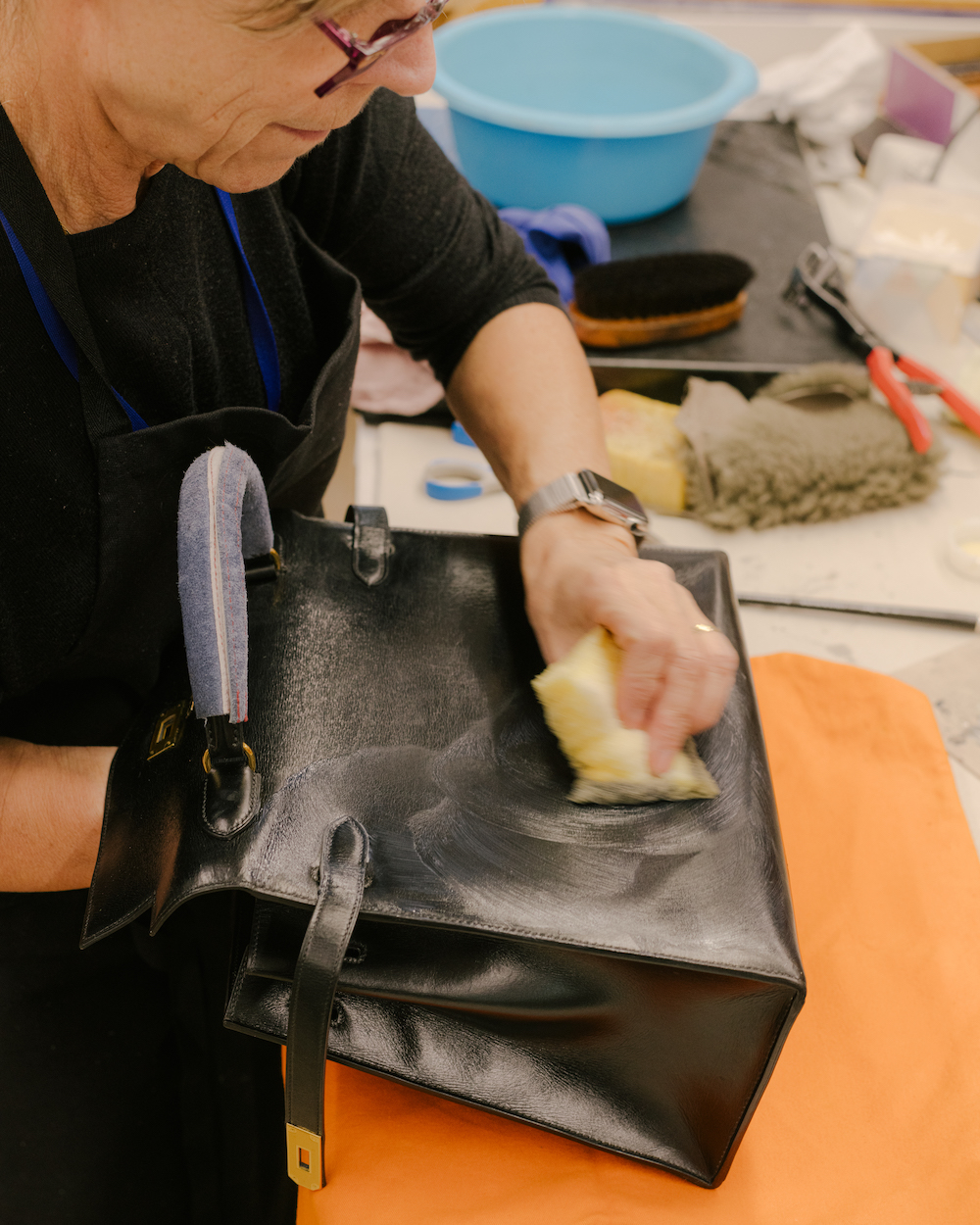
Repair Workshop, photo by Maxime Verret, courtesy to Hermès.
WW: What does Hermès’s participation in the UN Global Compact—a voluntary initiative based on CEO commitments to implement universal sustainability principles—entail?
OF: Sustainable development is a part of our DNA, but now we also have to face some constraints. We have to be more visible in what we do, and the annual report is a good support to explain what we do. And one of the most important parts of that report today is dedicated to sustainable issues.
Our sustainable development strategy has been organised to link our actions regarding sustainable development with global compact subjects—like good health and well-being. During the COVID-19 crisis, we put in place available psychologists for our people to call if they did not feel well or wanted to be supported. All of this is a part of the Global Compact approach.
WW: Is there anything you’ve learned from this report that has been surprising or new brought on by the consumer’s demands?
OF: This wasn’t necessarily surprising, but maybe what was important was to see that the more authentic you are, the more coherent you are in your strategy, the better it is to explain and give sense to what you are doing. What is important for Hermès is transforming things for the long term. It’s why we are cautious of our impact.
When we implement a workshop in the countryside in France, we know we will transform that small city for the long term—with a positive impact on the lives of people there and develop know-how for the long term. At the end, we will also produce objects for the long-term. It’s why we have to protect our people, the nature, and every environment we are working in and with.







